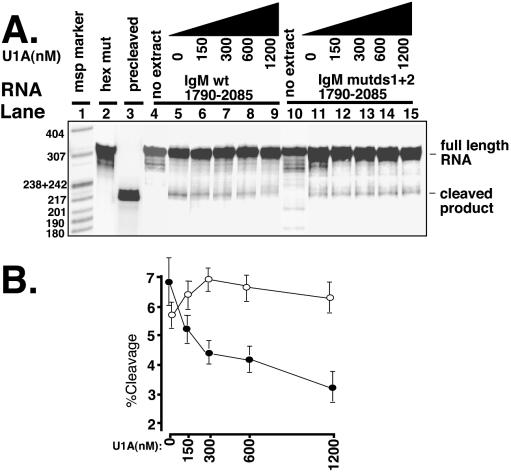FIG. 7.
U1A binding between the two GU-rich regions inhibits cleavage at the secretory poly(A) site. Uniformly radiolabeled RNA was incubated with increasing concentrations of recombinant U1A and HeLa cell extracts for 2 h at 30°C. After proteinase K digestion, phenol-chloroform extraction, and ethanol precipitation, products were run on 8% denaturing PAGE. The full-length RNA and cleavage products are indicated on the right. The controls were an extended hexanucleotide mutant spanning position 1790 to 2085 which did not cleave in HeLa cell extracts (lane 2) and a precleaved RNA substrate (position 1790 to 1998) as a marker of the correct position for the cleaved product (lane 3). Lanes 4 and 10 are input RNA without nuclear extracts. wt, wild type. (B) Phosphorimager quantitation of panel A. Results are expressed as percent cleavage. Solid squares are the quantitation of the wild type (lanes 5 to 9) with increasing concentrations of recombinant U1A; open circles represent the same for the substrate containing mutations in the downstream U1A (lanes 11 to 15). Data are means of triplicates from three separate cleavage assays ± SE.

